Social Influence

No man is an island,
Entire of itself,
Every man is a piece of the continent,
A part of the main.
John Donne Sources of social influence on CB
Marketer dominated sources

Non-marketer dominated sources 
Sources of social influence on CB

Opinion leaders
Individuals who act as an information broker between the mass media and the opinions and behaviours of an individual or group.

Reference groups as sources of influence
Aspirational reference groups: a group that we admire and desire to be like.
Associative reference groups: a group to which we currently belong.
Dissociative reference groups: a group we do not want to emulate.
Reference groups
- Marketers should associate products with aspirational reference groups
- Marketers should accurately represent associative reference groups.
- Marketers should avoid associating their products with dissociative reference groups
Types of social influence
Sources of influence exert two types of influence, normative and informational.
Normative influence is social pressure designed to encourage conformity to the expectations of others.
Informational influence is the extent to which others influence consumers simply by providing information.
Outcomes of social influence
Normative and informational influences have several important effects on consumption behaviours
- Conformity: doing what others in the group do
The Ash experiment
Outcomes of social influence
Normative and informational influences have several important effects on consumption behaviours
Conformity: doing what others in the group do
Compliance: doing what the group or social influencer asks
Reactance: doing the opposite of what the individual or group wants us to do
Some group effects on decision-making
Deindividuation: individual identities become submerged within a group

If you could be totally invisible for 24 hours and were completely assured that you would not be detected or held responsible for your actions, what would you do?
What if I told you…
The average number of antisocial responses given by inmates at a maximum security prison was 36% of total responses (antisocial + Pro-social).
Some group effects on decision-making
- Deindividuation: individual identities become submerged within a group
- Example: binge drinking at college parties
- Social loafing: People don’t devote as much to a task when their contribution is part of a larger group
- Example: Consumers tend to tip less when eating in groups
Risky shift?
Monica, a competent chess player, is participating in a national chess tournament. In an early match, she draws the top-ranked player in the tournament as her opponent. Monica is ranked much lower. During the match, Monica sees the possibility of a deceptive (but legal) maneuver which might bring her a quick victory. However, should the move fail, Monica would be left in an exposed position with defeat an almost certainty.
Imagine that you are advising Monica. What is the lowest probability that the maneuver would succeed before you would advise Monica to attempt it?
The chances should be at least ___ in 10 that the the maneuver would succeed before I would advise Monica to attempt it.
When deciding alone, the lowest acceptable probability of success = 3 in 10
When deciding in a group, the lowest acceptable probability of success = 1 in 10
Not always
Dominic, a young married man with two children, has a secure but low-paid job and no savings. Someone gives him a tip about a stock that will triple in value if the company’s new product is successful, but will plummet if the new product fails.
Should Dominic sell his life insurance policy and invest in the company?
Group polarization
The tendency for groups to make decisions that are more extreme than the initial inclinations of its members
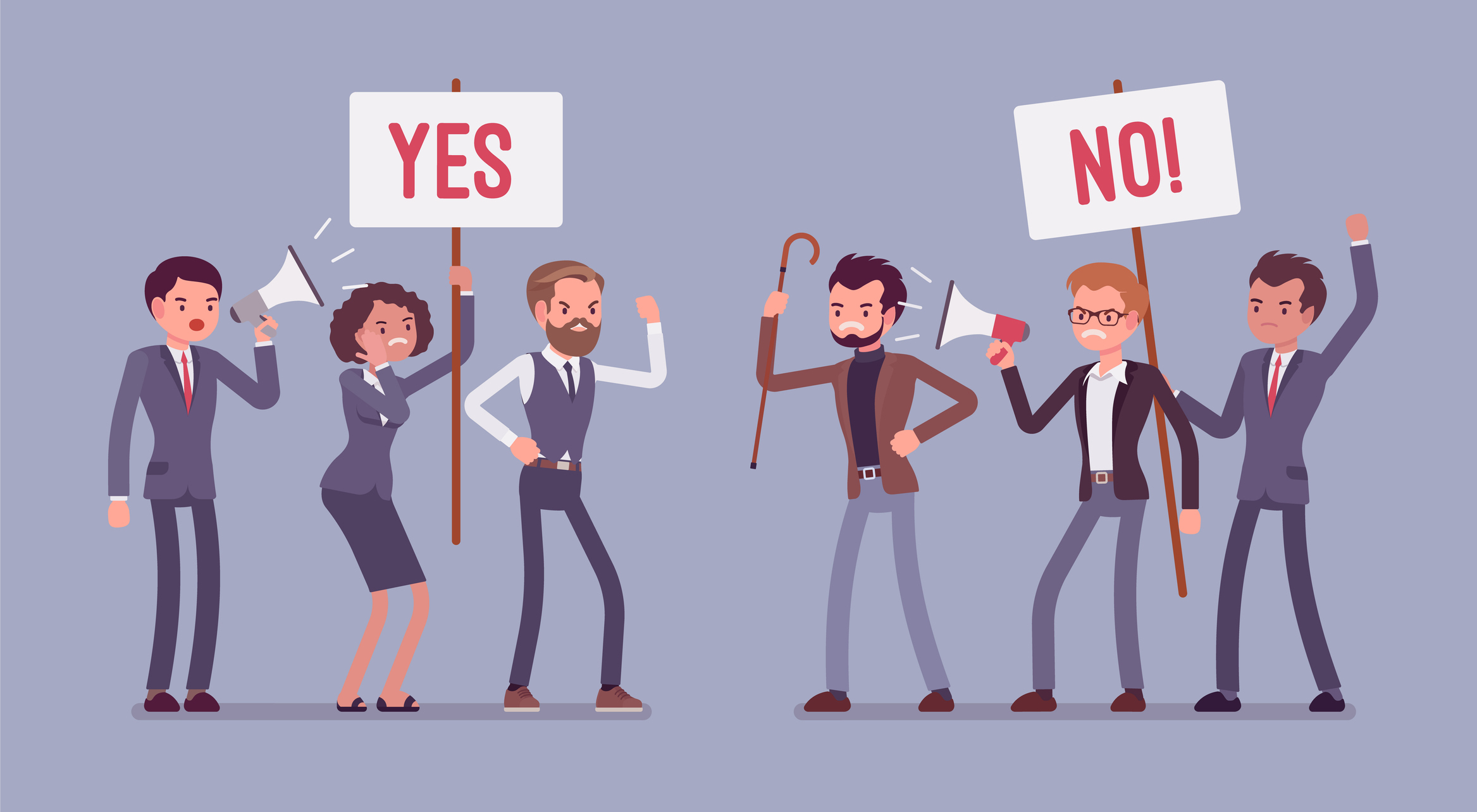
Some group effects on decision-making
Deindividuation: individual identities become submerged within a group
- Example: binge drinking at college parties
Social loafing: People don’t devote as much to a task when their contribution is part of a larger group
- Example: Consumers tend to tip less when eating in groups
Risky shift: Group members show a greater willingness to consider riskier alternatives following group discussion than if members decide alone
Polarization: Group discussion increases the extremity of whatever attitude of belief the group members were leaning toward before the discussion began
Not all group effects are negative…
The Wisdom of Crowds: Under the right circumstances (e.g., given freely contributed inputs from varied perspectives), groups can make better decisions than the average individual.
The jelly bean challenge
The jelly bean challenge
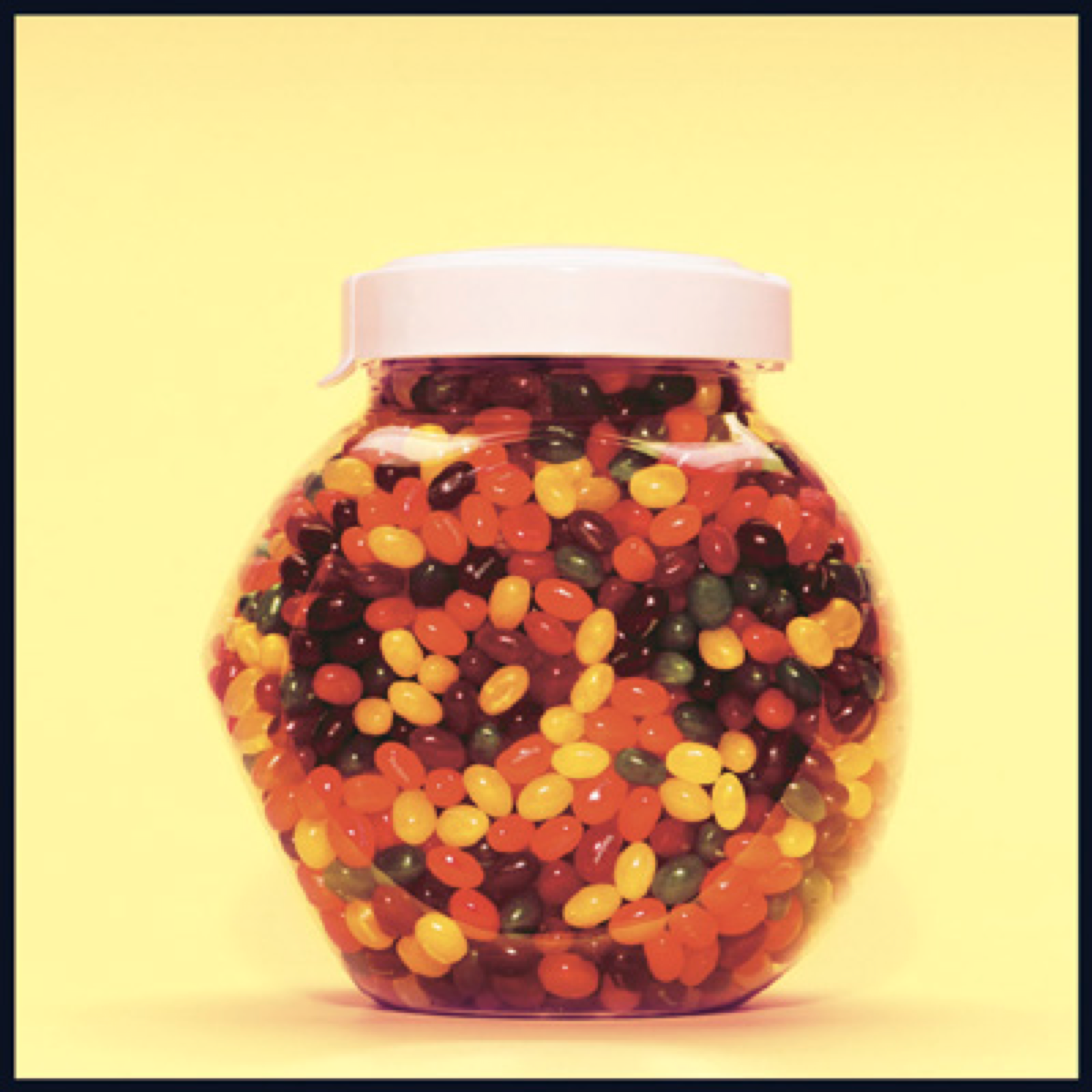
The jelly bean challenge
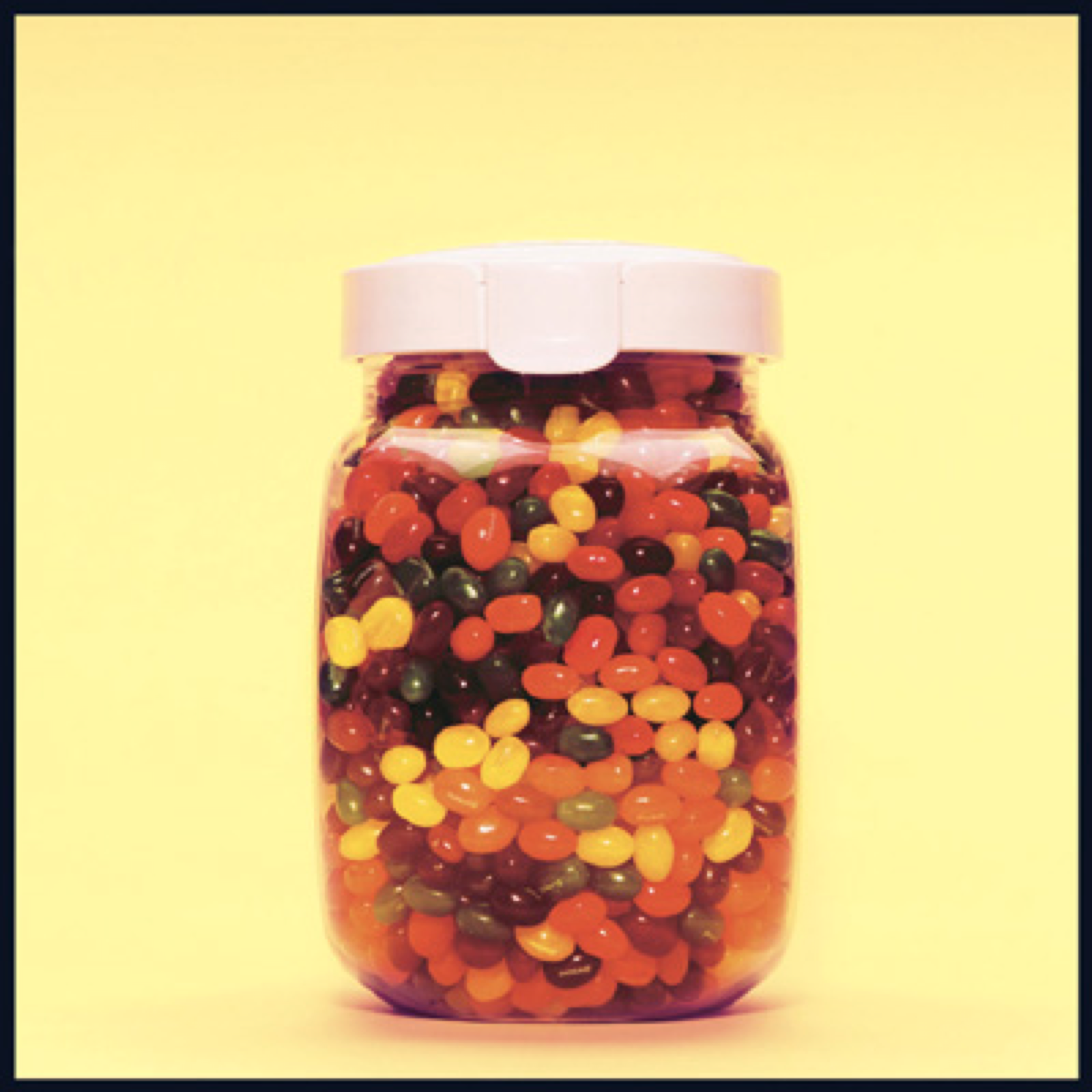
Prisoner’s dilemma

Prisoner’s dilemma

Increasing cooperation in the prisoner’s dilemma
People are more likely to adopt a cooperative strategy that maximizes both their profits and their partner’s if:
Playing the game with a friend (someone they trust)
They expect to interact with their partner in the future
Changing the name of the game from the “Wall Street Game” to the “Community Game” increased the percentage of people who cooperated from 33% to 71% in one study
Tit-for-Tat Strategy: Acting cooperatively at first, but then always responding the way your opponent did (cooperatively or competitively) on the previous trial
Public goods game
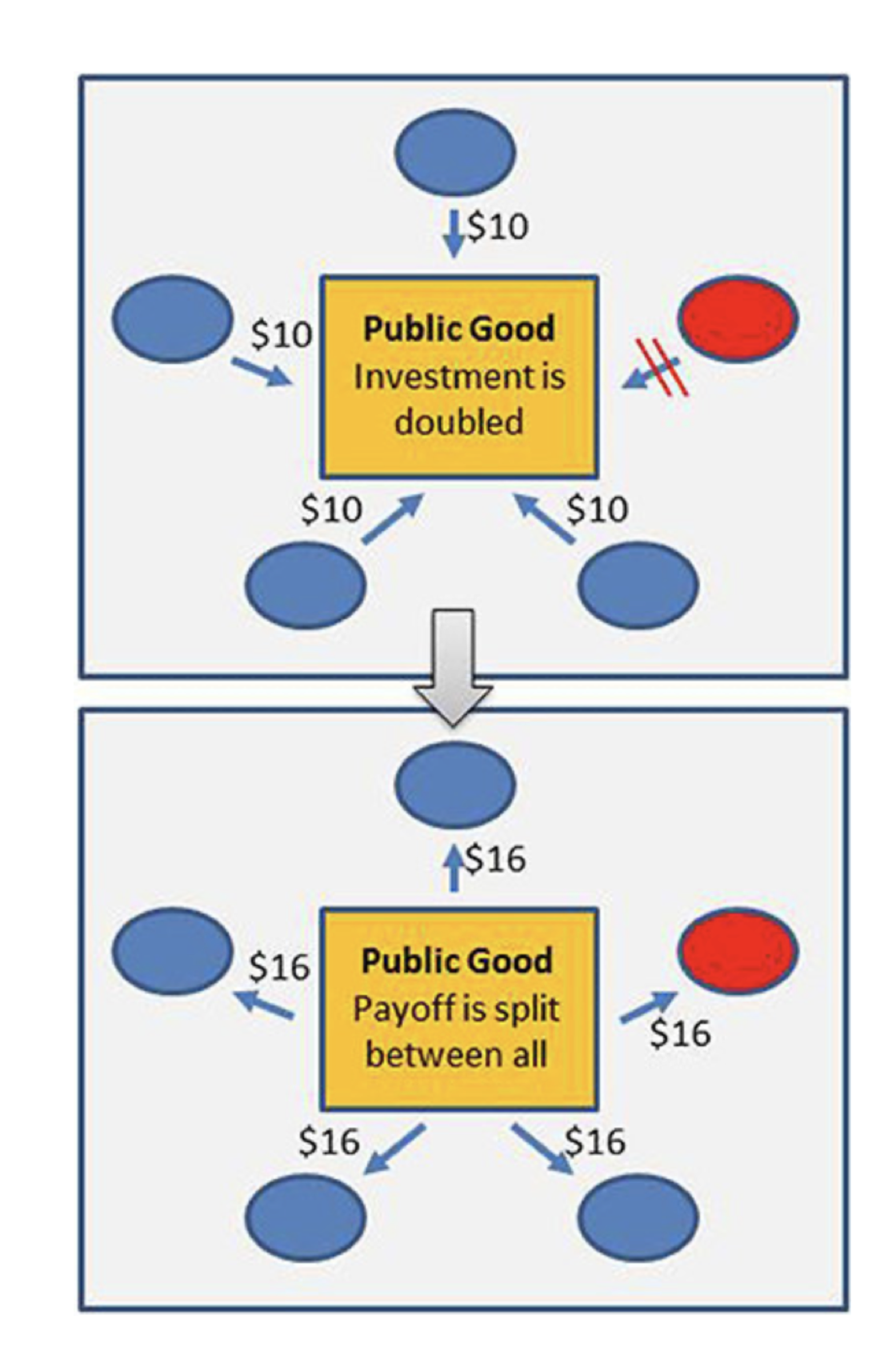
Players who refrain from investing will receive a larger net payoff than players who do invest
Public goods game
- Two players: each is given $1. Then they are asked to decide whether to contribute their dollar to a public fund or not.
- Money in the public fund is multiplied by 1.5 and redistributed equally among the players

Public goods game
- Two players: each is given $1. Then they are asked to decide whether to contribute their dollar to a public fund or not.
- Money in the public fund is multiplied by 1.5 and redistributed equally among the players

Public goods game
- Two players: each is given $1. Then they are asked to decide whether to contribute their dollar to a public fund or not.
- Money in the public fund is multiplied by 1.5 and redistributed equally among the players

Public goods game
- Two players: each is given $1. Then they are asked to decide whether to contribute their dollar to a public fund or not.
- Money in the public fund is multiplied by 1.5 and redistributed equally among the players

Public goods game
- Two players: each is given $1. Then they are asked to decide whether to contribute their dollar to a public fund or not.
- Money in the public fund is multiplied by 1.5 and redistributed equally among the players

Public goods game
- Two players: each is given $1. Then they are asked to decide whether to contribute their dollar to a public fund or not.
- Money in the public fund is multiplied by 1.5 and redistributed equally among the players

Tragedy of the commons
The ultimatum game
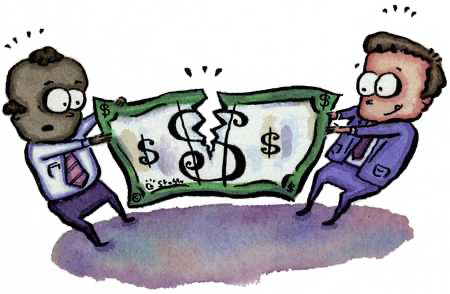
The dictator game
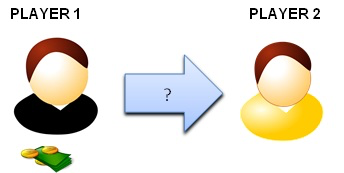
The trust game

